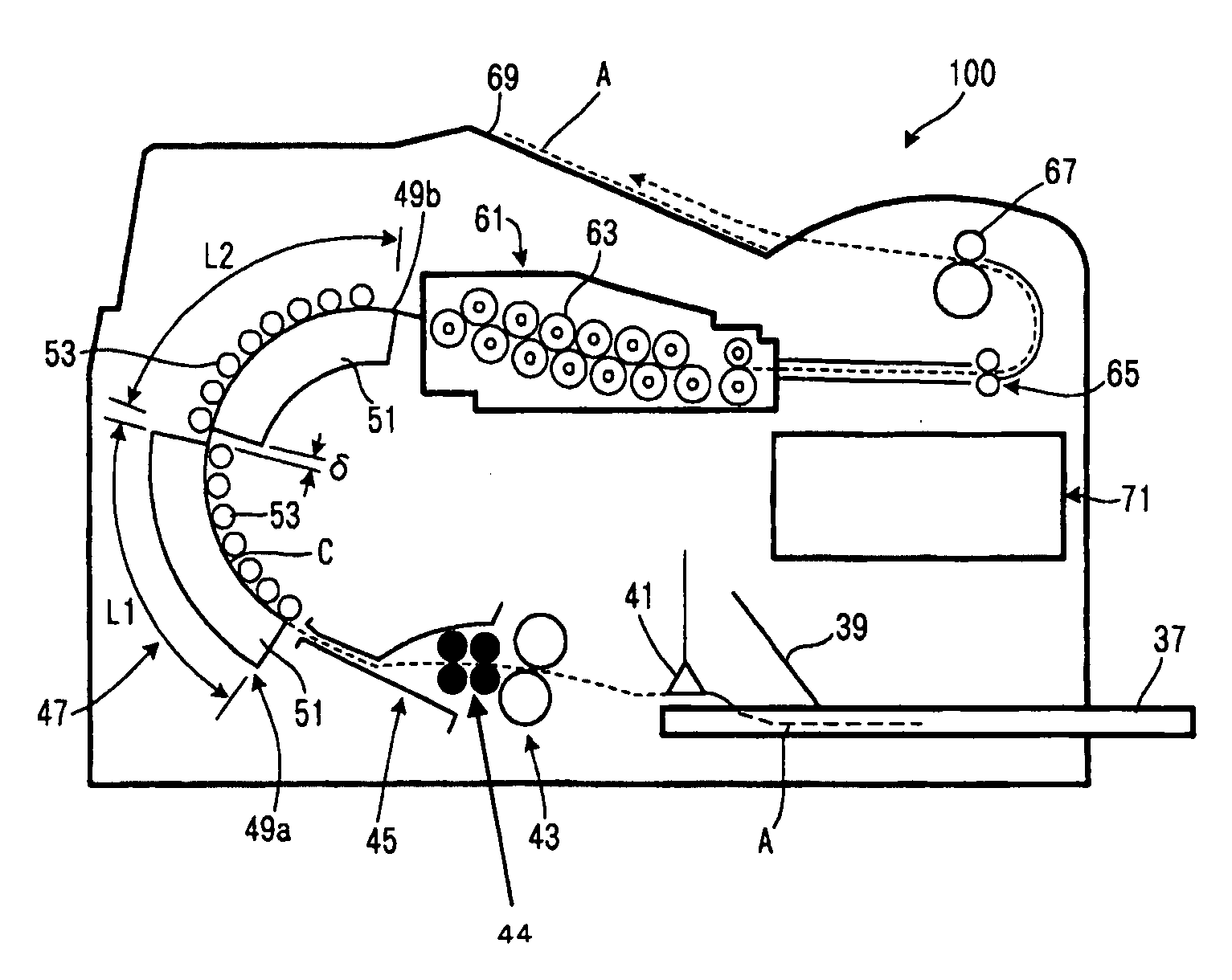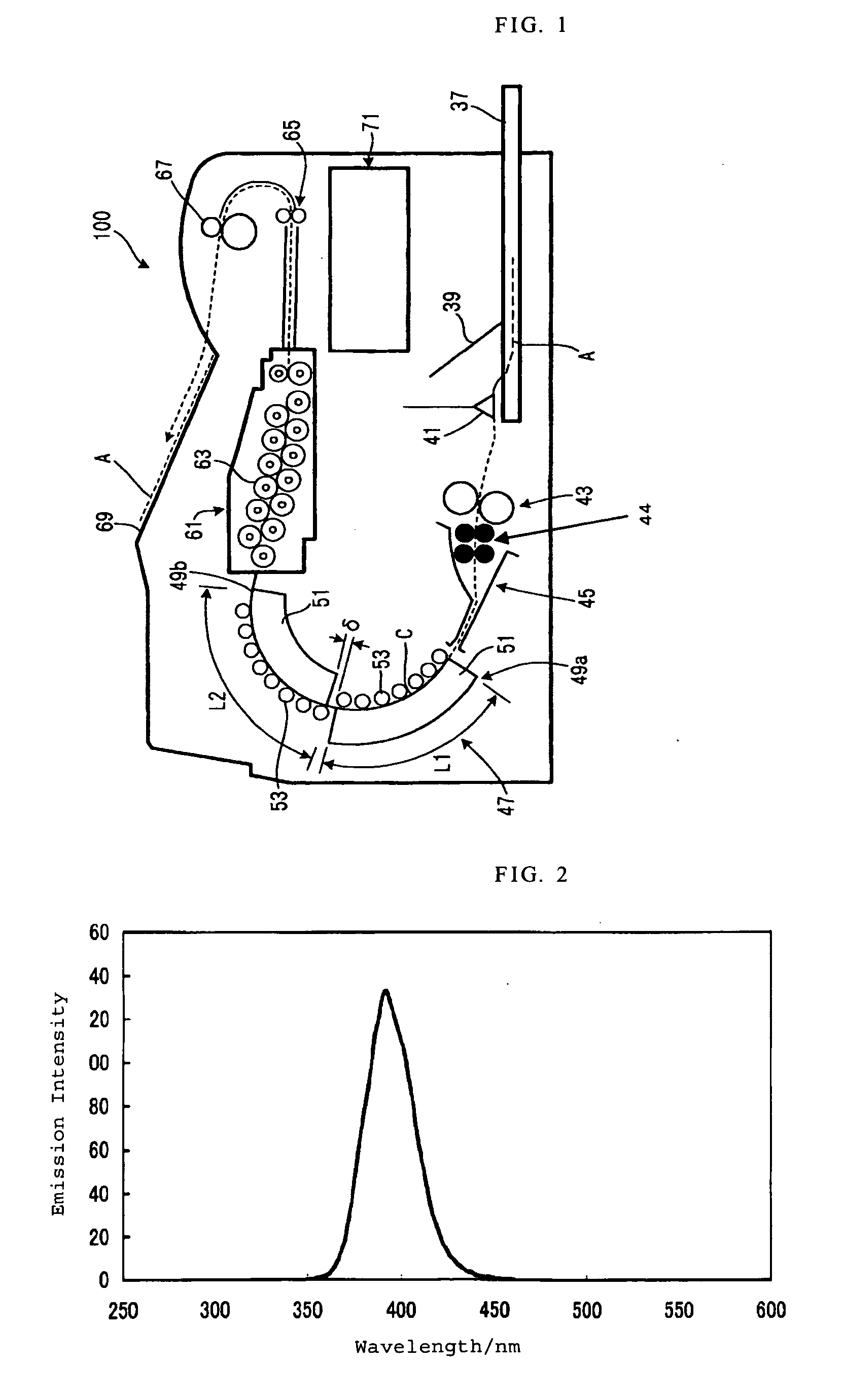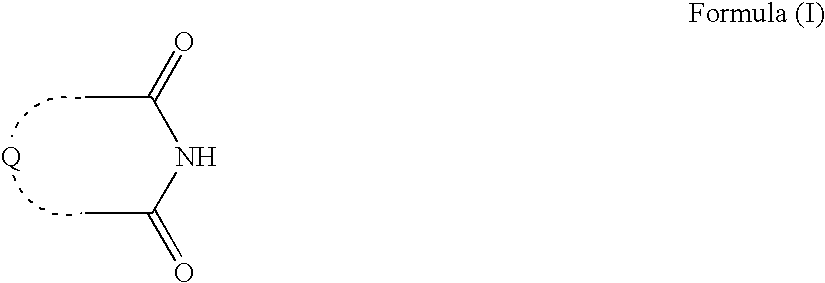Photothermographic material and image forming method
a technology of photothermographic material and image forming method, which is applied in the direction of multicolor photographic processing, photosensitive materials, instruments, etc., can solve the problems of large amount of fogging, difficult to obtain high sensitivity, and not satisfactory as medical image output systems
- Summary
- Abstract
- Description
- Claims
- Application Information
AI Technical Summary
Benefits of technology
Problems solved by technology
Method used
Image
Examples
example 1
1. Preparation of PET Support
[0486] 1) Film Manufacturing
[0487] PET having IV (intrinsic viscosity) of 0.66 (measured in phenol / tetrachloroethane=6 / 4 (mass ratio) at 25° C.) was obtained according to a conventional manner using terephthalic acid and ethylene glycol. The product was pelletized, dried at 130° C. for 4 hours, and melted at 300° C. Thereafter, the mixture was extruded from a T-die and rapidly cooled to form a non-tentered film.
[0488] The film was stretched along the longitudinal direction by 3.3 times using rollers of different peripheral speeds, and then stretched along the transverse direction by 4.5 times using a tenter machine. The temperatures used for these operations were 110° C. and 130° C., respectively. Then, the film was subjected to thermal fixation at 240° C. for 20 seconds, and relaxed by 4% along the transverse direction at the same temperature. Thereafter, the chucking part was slit off, and both edges of the film were knurled. Then the film was roll...
example 2
1. Preparations of Sample
[0617] Preparations of sample Nos. 21 to 36 shown in Table 5 were conducted similar to Example 1, except that using reducing agent-1 and a nucleator instead of using an infectious developing reducing agent. The nucleator was used by preparing a dispersion as follows.
[0618]>
[0619] 2.5 g of poly(vinyl alcohol) (manufactured by Kuraray Co., Ltd., PVA-217) and 87.5 g of water were added to 10 g of compound No. SH-7 as a nucleator, and thoroughly admixed to give a slurry. This slurry was allowed to stand for 3 hours. Zirconia beads having a mean particle diameter of 0.5 mm were provided in an amount of 240 g, and charged in a vessel with the slurry. Dispersion was performed with a dispersing machine (¼ G sand grinder mill: manufactured by AIMEX Co., Ltd.) for 10 hours to obtain a solid fine particle dispersion of nucleator. Particles of the nucleator included in the resulting nucleator dispersion had a mean particle diameter of 0.5 μm, and 80% by weight of the...
example 3
1. Preparations of Sample
[0624]>
[0625] A solution was prepared by dissolving 85 g of lime processed gelatin, 25 g of phthalated gelatin in 2 liters of ion-exchange water in a reaction vessel and stirred well (solution A). A solution containing 185 g of benzotriazole and 1405 mL of ion-exchange water (solution B), and 680 g of 2.5 mol / L sodium hydroxide solution were prepared. The solution of the reaction vessel was adjusted to keep the pAg and pH at 7.25 and 8.0, respectively, if required, by adding solution B and 2.5 mol / L sodium hydroxide solution. And the temperature of the mixture was kept at 36° C.
[0626] Solution C containing 228.5 g of silver nitrate and 1222 mL of ion-exchange water was added into the reaction vessel at an accelerated flow rate (flow rate: 16 (1+0.002t2) mL / min, wherein t represents time expressed in minute). And then solution B was concurrently added to keep the pAg at 7.25. When the addition of solution C was finished, the process was stopped. And then, ...
PUM
| Property | Measurement | Unit |
|---|---|---|
| mean equivalent spherical diameter | aaaaa | aaaaa |
| mean aspect ratio | aaaaa | aaaaa |
| temperature | aaaaa | aaaaa |
Abstract
Description
Claims
Application Information
 Login to View More
Login to View More - R&D
- Intellectual Property
- Life Sciences
- Materials
- Tech Scout
- Unparalleled Data Quality
- Higher Quality Content
- 60% Fewer Hallucinations
Browse by: Latest US Patents, China's latest patents, Technical Efficacy Thesaurus, Application Domain, Technology Topic, Popular Technical Reports.
© 2025 PatSnap. All rights reserved.Legal|Privacy policy|Modern Slavery Act Transparency Statement|Sitemap|About US| Contact US: help@patsnap.com



